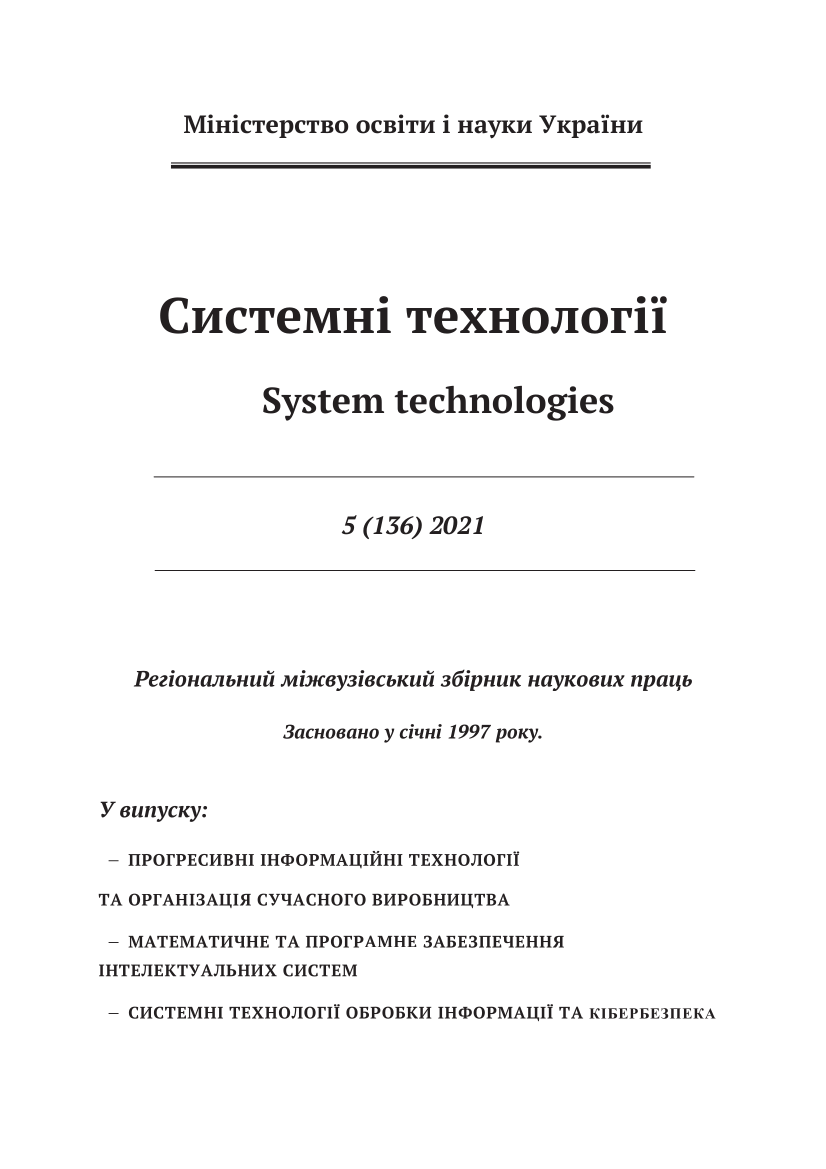ВИЗНАЧЕННЯ СХОЖИХ ГІДРОЛОГІЧНИХ РЯДІВ ДАНИХ З ВИКОРИСТАННЯМ КОЕФІЦІЄНТІВ КОРЕЛЯЦІЇ
DOI:
https://doi.org/10.34185/1562-9945-5-136-2021-10Ключові слова:
коефіцієнти кореляції, схожі ряди даних, гідрологічний моніторинг, інформаційна технологіяАнотація
В роботі описано розроблену складову програмного забезпечення для визначення схожих рядів даних, що представлені певними показниками. Основою обчислювальної схеми є обчислення коефіцієнтів кореляції Спірмена та Пірсона. При проведені аналізу передбачається поетапна оцінка результатів, що дозволяє контролювати хід аналізу та інтерпретувати отримані результати, а також широкий спектр відображення результатів. Представлено результати проведення обчислювального експерименту проведеного за показниками рівня води в період з 01.01.2000р. по 31.12.2014р., в якості досліджуваного ряду обрано дані пункту спостереження розташованого на р. Турія в м. Ковель Волинської обл. За результатами аналізу знайдено три гідрологічні пункти спостережень, дані яких мають сильний кореляційний зв’язок з даними до-сліджуваного посту, проте лише два з них за значеннями оцінок вважаються дуже схожими.
Посилання
Hopchenko E.D., Ovcharuk V.A., Todorova E.Y. Maksymalnyi stok dozhdevykh pavodkov rek Hornoho Kryma // Visnyk Odeskoho derzhavnoho ekolohichnoho universytetu. – 2014. – Vyp.17. – S.133-140.
Obodovskyi O.H. ta in. Uzahalnennia serednoho richnoho stoku vody richok vidpovidno do hidrohrafichnoho raionuvannia Ukrainy// Visnyk Kharkivskoho natsionalnoho universytetu imeni VN Karazina, ceriia «Heolohiia. Heohrafiia. Ekolohiia» – 2019. – Vyp. 51. – S. 158-170.
Mozghovyi A. O. Doslidzhennia koreliatsiinoi zalezhnosti maksymalnoi tovshchyny lodu za statystychnymy danymy sposterezhen u vodoskhovyshchakh hidrovuzliv Dniprovskoho kaskadu // Naukovyi visnyk budivnytstva – 2018. – T.– 3 (93). – S. 149-155.
Obodovskyi O.H. ta in. Serednii richnyi stik vody v mezhakh raioniv richkovykh baseiniv Ukrainy. Hidrolohiia, hidrokhimiia i hidroekolohiia – 2019. – T. 3. –
S. 65-66.
Oshurok D.O., Skrynyk O.Ia., Osadchyi V.I. Pryvedennia vymirianykh znachen shvydkosti vitru do umov vidkrytoho horyzontu // Hidrolohiia, hidrokhimiia i hidroekolohiia – 2019. – T.3. – S. 139-141.
Chen Lu, Singh Vijay P., Guo Shenglian. Measure of correlation between river flows using the copula-entropy method. Journal of Hydrologic Engineering, 2013, 18.12: r. 1591-1606.
Mudra K. V. Vidnovlennia stoku vody na hidrolohichnykh postakh richky Dnister z metoiu vyvchennia yoho dovhoperiodnykh kolyvan // Hidrolohiia, hidrokhimiia i hidroekolohiia. – 2017. – T. 2. – S. 30-39.
Artemenko V. A., Petrovych V. V. Metod vosstanovlenyia sverkhbolshykh propuskov v hydrolohycheskykh vremennыkh riadakh // Avtomobilni dorohy i dorozhne budivnytstvo, 2015, 93: 150-156.
Chornomorets Yu. O., Pavlenko P. O.; Lukianets O. I. Vidnovlennia serednoho richnoho stoku vody richky Dnipro. Hidrolohiia, hidrokhimiia i hidroekolohiia – 2017. – T. 4 (47). – S. 36-47.
Bazhanova L. V. Otsenka hydrolohycheskoho montorynha i vosstanovlenye stoka rek metodom parnoi korreliatsyy // Nauka, novye tekhnolohyy i innovatsii Kurhuzstana, 2018, 3: 134-140.
Завантаження
Опубліковано
Номер
Розділ
Ліцензія

Ця робота ліцензується відповідно до ліцензії Creative Commons Attribution 4.0 International License.















